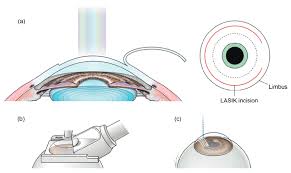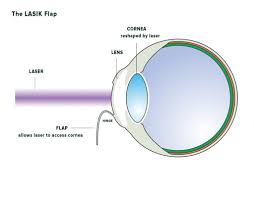Table of Contents
ToggleSimilar to LASIK, the SMILE procedure uses laser vision correction. The fact that SMILE is only FDA-authorised for individuals with nearsightedness and astigmatism is one of the most significant differences between LASIK and SMILE.
The flap and the lenticule are the other obvious distinction between LASIK and SMILE. In LASIK, a flap must be made, whereas in SMILE, a lenticule must be made. Both options are viable, but since their methods differ, they achieve different goals. A lenticule and a small incision are made after the eye has been numbed. The lenticule resembles a contact lens in size. Both are produced inside an intact cornea. The lenticule is first created and then extracted via the incision. The lenticule resembles a contact lens in size. Both are produced inside an entire cornea. The lenticule is first created and then extracted via the incision. There is less damage to the eye’s surface since the SMILE incision is smaller than other incisions used during conventional laser vision correction operations. The removal of the lenticule permanently alters the cornea’s shape. Because of this, SMILE may correct refractive problems, including astigmatism and nearsightedness!
SMILE takes just a few minutes to complete from beginning to end. Your cornea’s reshaping by the laser only takes 30 seconds!
With SMILE, you cannot only anticipate visual freedom from glasses and contacts, but you can also anticipate a quick. Most folks may resume most of their regular activities the very next day!
Any laser eye surgery precludes the treatment of subsequent eye diseases. It also applies to SMILE.
What does this mean? Sure, SMILE can correct astigmatism and nearsightedness, but it won’t stop you from getting glaucoma, presbyopia, or cataracts.
Only current refractive defects are correctable via SMILE. Yet, the fact that the operation is irreversible remains unchanged.
You won’t require glasses or contact lenses, even if you later develop these problems. The repair that SMILE brings about is long-lasting and irreversible.
Is Smile surgery permanent?
Unquestionably, SMILE Eye Surgery is permanent. It was developed by medical research to help astigmatic and nearsighted individuals. And that is when laser vision correction, such as LASIK, PRK, or another method, cannot provide the greatest results. Today, vision correction surgery is the most popular choice worldwide. Because of its cutting-edge functionality and success in restoring clear eyesight, it is gaining popularity among people all over the world. If you’ve ever dreamed about awakening with crystal-clear vision, SMILE is the best option! The recovery period is one aspect of SMILE that distinguishes it from other laser vision correction techniques.
SMILE has by far the quickest and simplest recovery time! Most patients relax indoors and away from the sunshine on the day of and the day after their surgery.
If you work in front of a computer for longer, you may need to take 2-3 days off work because you might feel eye strain while your eyes heal. After that, however, you can benefit from your newfound freedom from glasses and contacts regarding vision!
The SMILE programme is for you if you’ve ever dreamed about waking up and having crystal clear vision !! The recuperation period is one of the features that sets SMILE apart from other laser vision correction procedures.
Without a doubt, SMILE has the quickest and simplest healing time! Most patients unwind indoors and out of the sun on the day after their surgery.
If you spend a lot of time in front of a computer, you might need to take a few days off of work to let your eyes rest. Otherwise, you might get eye strain. But after that, you may appreciate everything that going without glasses and contacts means for your visual independence!
After a few days, most SMILE patients can resume their daily routines. Wait a week before participating in contact sports or swimming for your safety.
You should safely and quickly recover after SMILE eye surgery if you use your prescription eye drops and adhere to your ophthalmologist’s instructions. The best part: as soon as a week after your treatment, you should start seeing 100% better!
If your eyesight changes, it’s likely due to your eyes’ evolving prescription. Because short-sighted persons become ever more short-sighted in their teens and their prescription changes year, we don’t treat young people in their teens.
Therefore, we must avoid treating young patients with shifting prescriptions who are under the age of 20 or 21.
The SMILE technique, which is always performed on persons who are short-sighted and may or may not have astigmatism, will have permanent results if applied to patients who have stable prescriptions.
As people get older and reach middle age, they could then require reading glasses. Also, as middle age advances, reading glasses may become less necessary.
Of course, having undergone SMILE doesn’t stop you from having a different operation to address the need for reading glasses in middle life.
Final Words
In conclusion, ReLEx SMILE is permanent, as is the result of surgery. However, our eyes will change as we age, possibly necessitating reading glasses.













